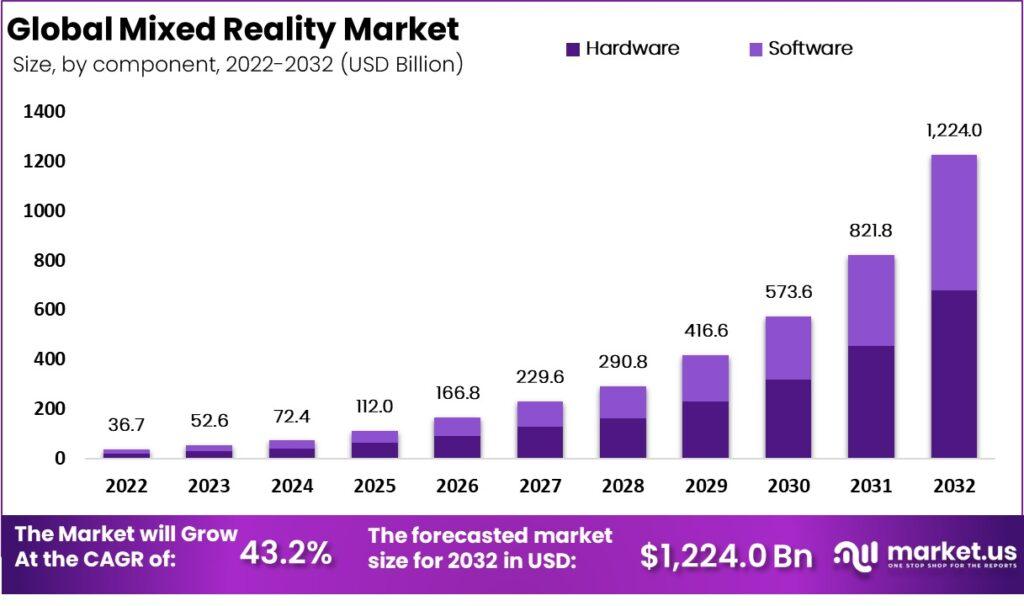Report Overview
The Global Mixed Reality Market size is expected to be worth around USD 1,224.0 Bn by 2032 from USD 36.7 Bn in 2022, growing at a CAGR of 43.2% during the forecast period from 2023 to 2032.
What are the types of mixed reality?
Mixed reality (MR) encompasses a spectrum of technologies that blend elements of the physical and virtual worlds. There are two primary types of mixed reality: Augmented Reality (AR) and Virtual Reality (VR). Within these categories, there are further distinctions based on the degree of immersion and interaction. Here are the main types of mixed reality:
-
Augmented Reality (AR):
-
Marker-based AR: In this type of AR, digital content is overlaid on physical objects with the help of markers or images that are recognized by a camera or device. This is commonly seen in educational apps and marketing materials.
-
Markerless AR: Also known as location-based or location-based AR, this type of AR does not require markers. It uses GPS, accelerometers, and other sensors to place digital content in real-world locations. Popular examples include Pokémon GO and location-based information apps.
-
Projection-based AR: Projectors are used to display digital content onto physical surfaces, such as walls or tables. Users can interact with the projected content using gestures or touch. This type is often used in interactive exhibits and presentations.
-
Wearable AR: AR content is viewed through specialized wearable devices like smart glasses or headsets. These devices provide a hands-free AR experience, and they can include information overlays or 3D holograms.
-
-
Virtual Reality (VR):
-
Immersive VR: This type of VR creates a fully immersive digital environment that completely replaces the real world. Users typically wear headsets that block out the physical world and interact with the virtual environment using controllers or gestures.
-
Non-Immersive VR: Non-immersive VR offers a less immersive experience than immersive VR. Users interact with digital content displayed on a screen, often with the help of a keyboard, mouse, or gamepad.
-
Mixed Reality VR: This type of VR blends elements of the real world with the virtual environment. Users may see and interact with real-world objects while also experiencing digital content. Devices like the Microsoft HoloLens fall into this category.
-
-
Mixed Reality (MR):
-
True MR: True mixed reality involves seamlessly merging virtual objects with the real world to the point where they interact with each other and with the physical environment. Users can move, manipulate, and interact with both virtual and real elements. This is often achieved using advanced sensors and spatial mapping technology.
-
Enhanced MR: Enhanced mixed reality offers a blend of AR and VR elements but may not reach the same level of seamlessness as true MR. Users can see and interact with both digital and real-world objects, but the interaction may be somewhat limited compared to true MR.
-
It's important to note that the distinction between these types of mixed reality can sometimes blur, and the terminology may vary depending on the source. The key factor that differentiates them is the level of immersion and the extent to which the virtual and real worlds interact.


